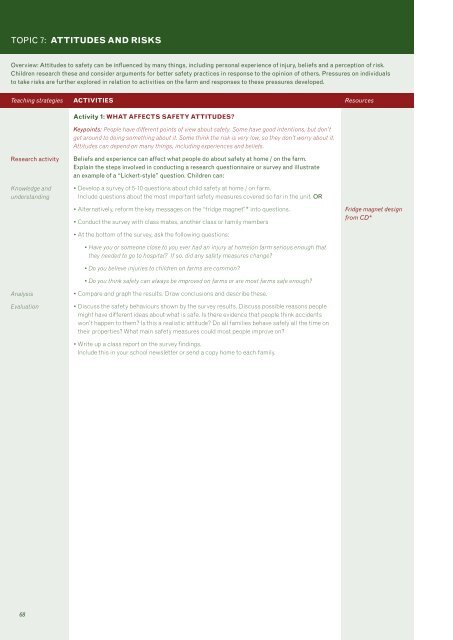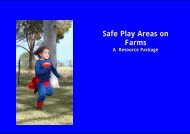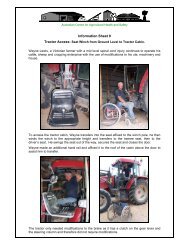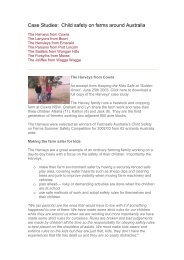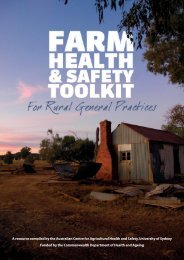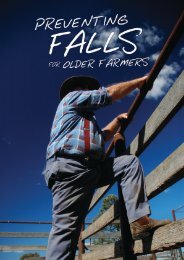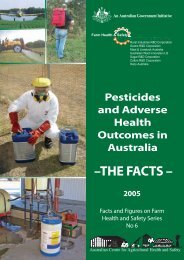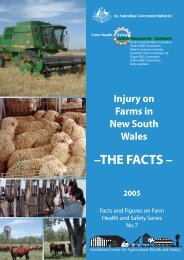Ripper ii Educational resource for primary schools - Australian ...
Ripper ii Educational resource for primary schools - Australian ...
Ripper ii Educational resource for primary schools - Australian ...
Create successful ePaper yourself
Turn your PDF publications into a flip-book with our unique Google optimized e-Paper software.
TOPIC 7: ATTITUDES AND RISKSOverview: Attitudes to safety can be influenced by many things, including personal experience of injury, beliefs and a perception of risk.Children research these and consider arguments <strong>for</strong> better safety practices in response to the opinion of others. Pressures on individualsto take risks are further explored in relation to activities on the farm and responses to these pressures developed.Teaching strategies ACTIVITIES ResourcesActivity 1: WHAT AFFECTS SAFETY ATTITUDES?Keypoints: People have different points of view about safety. Some have good intentions, but don’tget around to doing something about it. Some think the risk is very low, so they don’t worry about it.Attitudes can depend on many things, including experiences and beliefs.Research activityKnowledge andunderstandingBeliefs and experience can affect what people do about safety at home / on the farm.Explain the steps involved in conducting a research questionnaire or survey and illustratean example of a “Lickert-style” question. Children can:• Develop a survey of 5-10 questions about child safety at home / on farm.Include questions about the most important safety measures covered so far in the unit. OR• Alternatively, re<strong>for</strong>m the key messages on the “fridge magnet”* into questions.• Conduct the survey with class mates, another class or family membersFridge magnet designfrom CD*• At the bottom of the survey, ask the following questions:• Have you or someone close to you ever had an injury at home/on farm serious enough thatthey needed to go to hospital? If so, did any safety measures change?• Do you believe injuries to children on farms are common?• Do you think safety can always be improved on farms or are most farms safe enough?AnalysisEvaluation• Compare and graph the results. Draw conclusions and describe these.• Discuss the safety behaviours shown by the survey results. Discuss possible reasons peoplemight have different ideas about what is safe. Is there evidence that people think accidentswon’t happen to them? Is this a realistic attitude? Do all families behave safely all the time ontheir properties? What main safety measures could most people improve on?• Write up a class report on the survey findings.Include this in your school newsletter or send a copy home to each family.68


